Unlike other types of landscape places, children's activity areas are spaces specifically designed for children's activities. In addition to common urban public activity areas, they have now become one of the standard supporting facilities in residential areas. Within a specified number of residential areas, there must be a certain volume of children's activity areas. So, what aspects should we start from to design the most comfortable and suitable activity venue landscape for children's needs? Children's activity areas can be divided into three main areas based on their functionality, namely activity areas, rest areas, and other supporting areas. As the name suggests, the activity venue is the main area for children to play and engage in activities. Rest areas are generally grasslands or areas for sitting, lying, and playing, which are places for special groups including children, adults, and the elderly to try out. Other supporting facilities are mostly ecological parks, planting areas, etc.
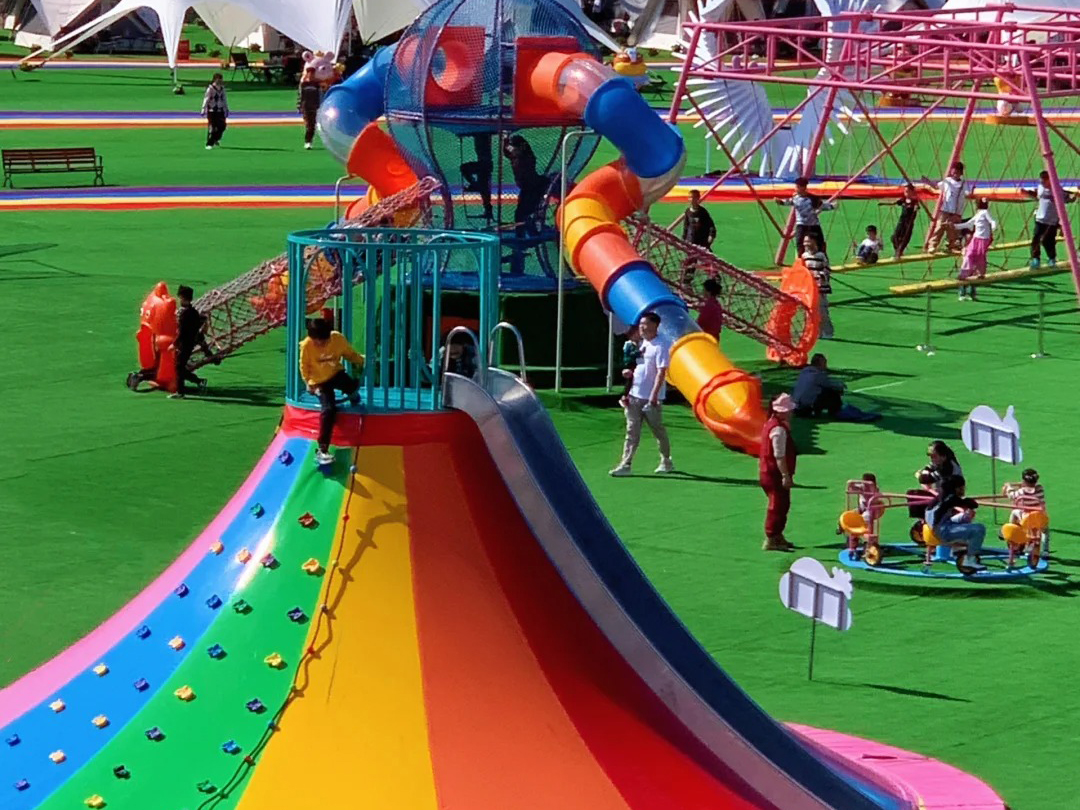
Design elements
01. Plants
Plants are essential design elements in children's activity areas, not only considering them as important landscape elements, but also having certain value for children's viewing, learning, and playing.
Children's activity areas should have colorful vegetation around them, while also considering reducing the possibility of accidental injuries. For example, flowers and color changing plants emphasize seasonal changes, which is beneficial for meeting the outdoor leisure and viewing needs of users. At the same time, children's interest in natural plants is stimulated and their cognition is expanded through brightly colored and uniquely shaped plant flowers and fruits.
Suitable for planting plants:
Large trees: Ficus microcarpa, with dense leaves, can provide shade and shade. The tree has aerial roots and is commonly known as a bearded tree.
● Medium trees: jackfruit, fruit viewing, flowers and fruits from old stems, interesting; Purple Bauhinia, observing flowers, has a long flowering period; Star anise, fragrant flowers, mosquito repellent.
Small trees: Poplar, flower and fruit observation, fruit shaped in a five pointed star shape, fun.
● Big shrub: Ziwei, ornamental, with dense flowers. When the bark is touched by human touch, it immediately shakes its branches and leaves, causing it to tremble all over, showing a systemic reaction of "itching fear", commonly known as the itching tree.
● Shrubs: large safflower, ornamental flower, safflower; Smiling, fragrant flowers; Red stepwood, with reddish purple leaves, can enhance the color of gardens.
● Herbs: Iris, observing flowers; Kidney fern, observing leaves.
Not suitable for planting plants:
Toxic plants: oleander, cassava, belladonna, etc.
Spiny plants: cactus, king flower, tiger thorn plum, golden border sewn hemp, sisal hemp, bougainvillea, triangular king whip, etc.
Plants with ecological problems: Eucalyptus, Trilobed Wedelia.
Plants that are prone to allergies: lacquer trees, geraniums, night lilies, wild chrysanthemums, evergreen trees, pine trees, red bean trees, etc;
Plants that are prone to causing diseases and pests: poplar, mulberry, oak, Chinese tallow, persimmon, etc;
Plants that are prone to excessive flying catkins include willows, sycamores, reeds, dandelions, kapok, etc.
02. Game facilities
Children aged 3 to 12 are the main target audience for children's activities in residential areas. According to research, children's thinking patterns during this period are mainly in the intuitive stage and are not easily stimulated by the environment. They focus their attention on a single point during activities, exhibiting a "self-centered" thinking state that does not pay attention to the surrounding environment. This feature should be fully considered in planning and design to ensure the safety of children's games. All facilities should prioritize safety and aim to cultivate and exercise children's physical fitness and adventurous spirit.
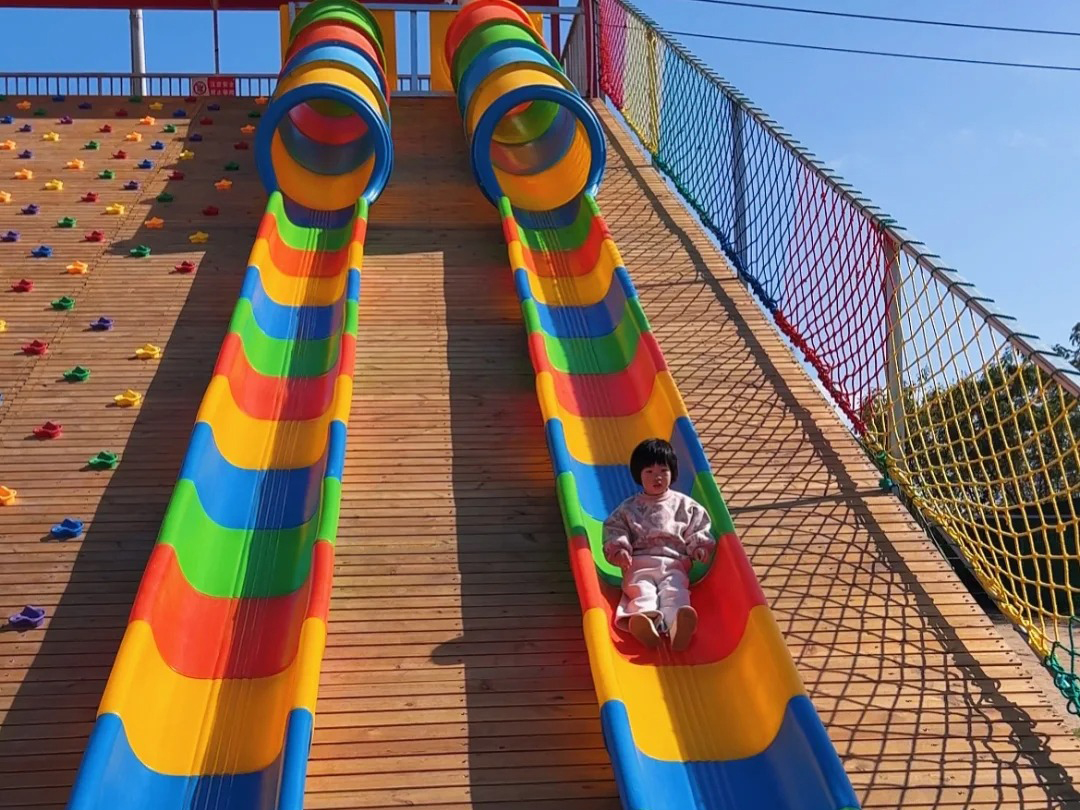
Key points of game facility planning
03. Paving
The road leading to the children's activity area and the road surface inside the children's activity area should be flat and non slip, and the road leading to the children's activity area should be convenient for strollers to pass through. There should be a hard ground in the children's activity area for children to play with small cars, ride three wheels, etc. Protective flooring should be used under all gaming facilities, such as sand, injection molded rubber, rubber pads, etc. Smooth and uneven paving, such as horseshoe stones, should not be used.
Characteristics of commonly used paving materials
Requirements for paving materials in different age groups
04. Terrain
The changing terrain can surprise children by causing them to roll, dive, slide, hide, and so on. Therefore, in the design, existing terrain with elevation changes or artificially created terrain with undulations can be utilized and strengthened. If there is a sudden change in slope, consider using terrain to design slides, and flat ground can be used for sports venues.
05. Water bodies
The water body generally adopts a natural style, and the natural shoreline and embankment are environments for children of all ages to train their hands-on skills. The water should not be too deep, and different depths (20cm-50cm) of pools should be set according to age or height to ensure the safety of children.
06. Sandy Land
Sand can attract and accommodate a large number of children for long-term activities. It should be located in a place that can be exposed to the sun and away from the wind, so that it will dry quickly after rain. At the same time, it is conducive to the sterilization and disinfection of sand pits and prevents sand from being lifted by the wind; In addition, some auxiliary elements can be added to the sand pit to enhance its fun, such as game rooms or platforms. As an important venue for children to exercise and shape their abilities and endurance, it is often combined with water bodies. But children in this age group have weak awareness of danger and the ability to avoid danger, and require adult care at all times.
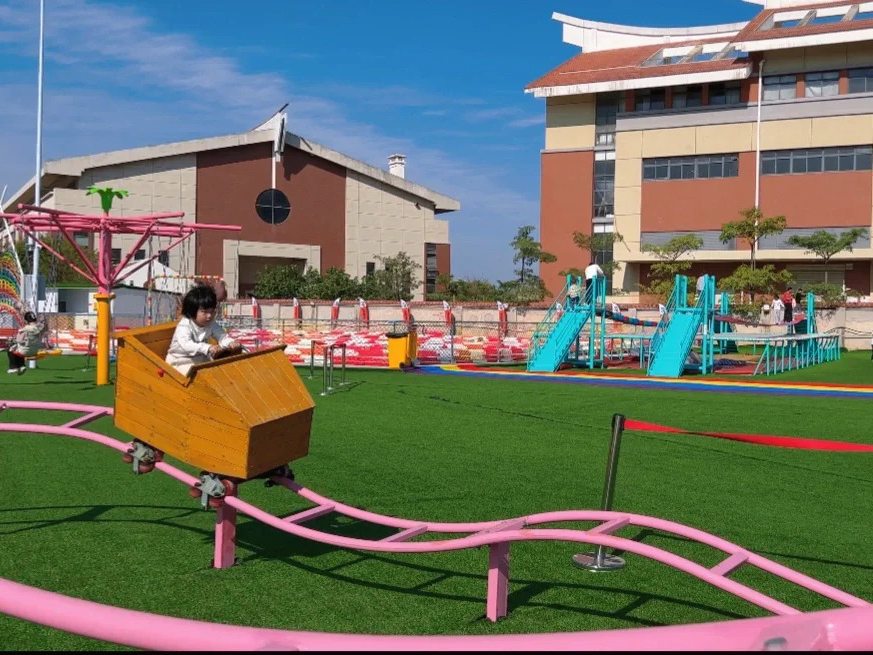
design requirement
01. Accessibility
Children's activity spaces must be arranged near residential areas. As children grow older, the distance gradually increases. German urban planning clearly states that the suitable distance for school-age children should be 300-400 meters, while for children over 12 years old, due to their ability to ride bicycles, this distance can be extended to 1 kilometer. The activity area for infants and young children should be located around their parents' residence.
02. Security
This standard places more emphasis on building safe sidewalks and bike lanes, and even considers it more important than building activity venues themselves. Regardless of distance, the safety of children and adolescents along the way from home to their activity area is extremely important. With safety standards in place, parents can rest assured that their children can explore the area near their homes on their own. In order to accommodate young children, it is best for these venues to avoid the road.
03. Recreational nature
Places that make people feel comfortable have higher recreational quality. In the eyes of young children, places with high recreational quality should be able to engage in sports activities while being away from adult control (of course, safety must be ensured first). These places should have appropriate clutter, piles of dry leaves, and overlooked grass and dead trees that are much more interesting than carefully maintained parks.
04. Multifunctionality
Children's activity spaces should be designed for multiple purposes, especially in places where children play more, and their functions should change with the changes of users. This can be achieved by providing movable facilities, not necessarily sports facilities. As long as it is safe, even a faulty device can be used.
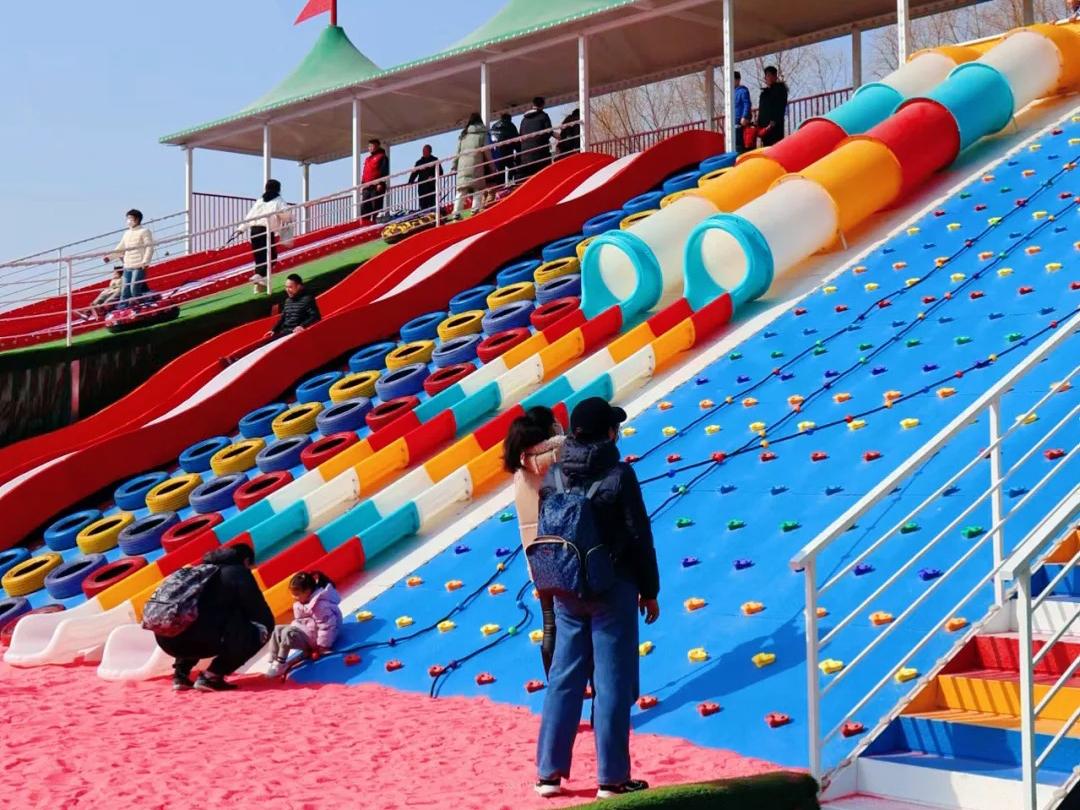
Design ideas
01. Integrating into nature and incorporating education into entertainment
Perhaps due to human nature, children may prefer to be closer to nature than any other age group. They are naturally fond of playing with nature, and water, leaves, flowers and plants, and sand are all their toys. A site closely integrated with nature not only attracts them, but also teaches them the basic principles of natural growth and circulation.
02. Enhance colors to attract attention
Due to children's sensitivity to colors and shapes, bright and lively colors and diverse shapes can better attract children's attention, while also improving their cognitive abilities. Distinguishing different spatial domains with different colors and materials can not only increase the attraction of the venue to children, but also bring richer and more colorful psychological experiences and play experiences.
03. Distinctive theme, creating fun
For children, whether the venue is "interesting" is always the most crucial, and this "fun" can often be achieved by establishing a distinct theme. Exaggerated designs, strange facilities, and playful experiences that they may not normally experience often excite children and leave their memories fresh.
04. Create activities to promote communication
The variety of activities for children often exceeds the imagination of designers. They not only make full use of specially designed activity facilities, but also excel at exploring potential activity spaces. Designers should strive to create diverse and even bizarre types of activities, so that children can gain more diverse social abilities through these activities.
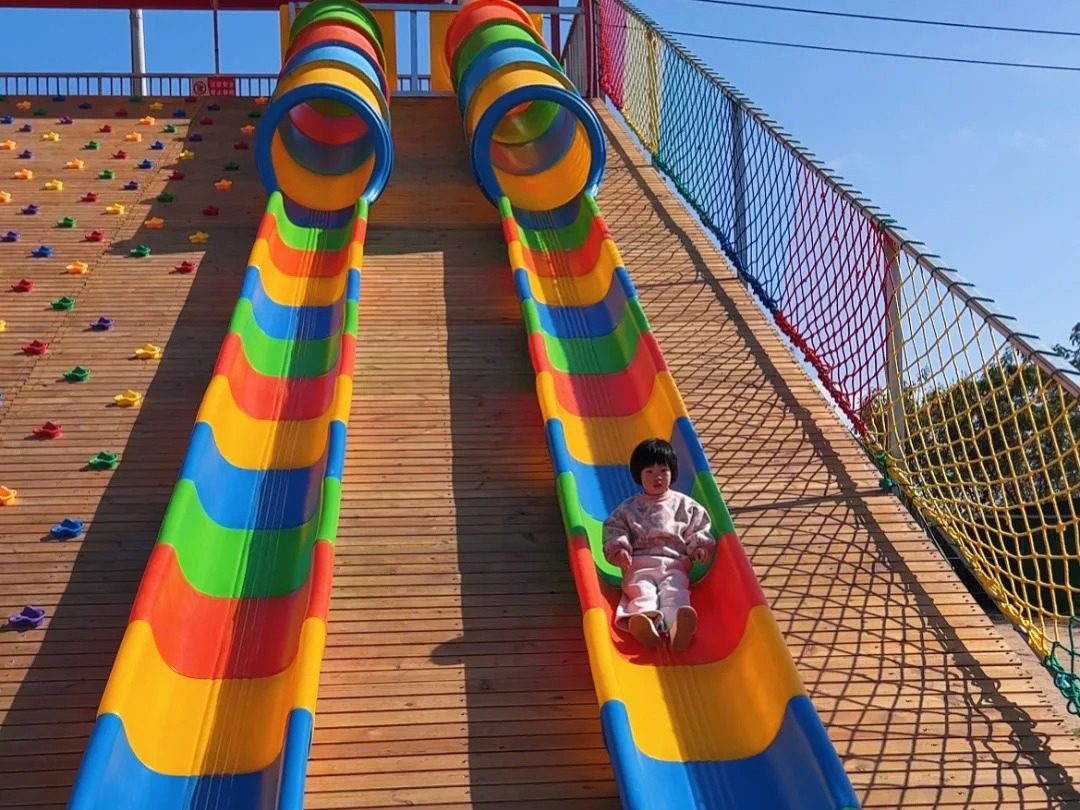
A children's activity venue provides a space for children's activities, with "play" as a natural activity. In addition to allowing children to follow their free hearts, it can also help them grow. It is a playground for children and a peaceful space for parents to protect their children. Here, children chase and play with each other, sharing the happy moments of this magical place together.

Design elements
01. Plants
Plants are essential design elements in children's activity areas, not only considering them as important landscape elements, but also having certain value for children's viewing, learning, and playing.
Children's activity areas should have colorful vegetation around them, while also considering reducing the possibility of accidental injuries. For example, flowers and color changing plants emphasize seasonal changes, which is beneficial for meeting the outdoor leisure and viewing needs of users. At the same time, children's interest in natural plants is stimulated and their cognition is expanded through brightly colored and uniquely shaped plant flowers and fruits.
Suitable for planting plants:
Large trees: Ficus microcarpa, with dense leaves, can provide shade and shade. The tree has aerial roots and is commonly known as a bearded tree.
● Medium trees: jackfruit, fruit viewing, flowers and fruits from old stems, interesting; Purple Bauhinia, observing flowers, has a long flowering period; Star anise, fragrant flowers, mosquito repellent.
Small trees: Poplar, flower and fruit observation, fruit shaped in a five pointed star shape, fun.
● Big shrub: Ziwei, ornamental, with dense flowers. When the bark is touched by human touch, it immediately shakes its branches and leaves, causing it to tremble all over, showing a systemic reaction of "itching fear", commonly known as the itching tree.
● Shrubs: large safflower, ornamental flower, safflower; Smiling, fragrant flowers; Red stepwood, with reddish purple leaves, can enhance the color of gardens.
● Herbs: Iris, observing flowers; Kidney fern, observing leaves.
Not suitable for planting plants:
Toxic plants: oleander, cassava, belladonna, etc.
Spiny plants: cactus, king flower, tiger thorn plum, golden border sewn hemp, sisal hemp, bougainvillea, triangular king whip, etc.
Plants with ecological problems: Eucalyptus, Trilobed Wedelia.
Plants that are prone to allergies: lacquer trees, geraniums, night lilies, wild chrysanthemums, evergreen trees, pine trees, red bean trees, etc;
Plants that are prone to causing diseases and pests: poplar, mulberry, oak, Chinese tallow, persimmon, etc;
Plants that are prone to excessive flying catkins include willows, sycamores, reeds, dandelions, kapok, etc.
02. Game facilities
Children aged 3 to 12 are the main target audience for children's activities in residential areas. According to research, children's thinking patterns during this period are mainly in the intuitive stage and are not easily stimulated by the environment. They focus their attention on a single point during activities, exhibiting a "self-centered" thinking state that does not pay attention to the surrounding environment. This feature should be fully considered in planning and design to ensure the safety of children's games. All facilities should prioritize safety and aim to cultivate and exercise children's physical fitness and adventurous spirit.

Key points of game facility planning
03. Paving
The road leading to the children's activity area and the road surface inside the children's activity area should be flat and non slip, and the road leading to the children's activity area should be convenient for strollers to pass through. There should be a hard ground in the children's activity area for children to play with small cars, ride three wheels, etc. Protective flooring should be used under all gaming facilities, such as sand, injection molded rubber, rubber pads, etc. Smooth and uneven paving, such as horseshoe stones, should not be used.
Characteristics of commonly used paving materials
Requirements for paving materials in different age groups
04. Terrain
The changing terrain can surprise children by causing them to roll, dive, slide, hide, and so on. Therefore, in the design, existing terrain with elevation changes or artificially created terrain with undulations can be utilized and strengthened. If there is a sudden change in slope, consider using terrain to design slides, and flat ground can be used for sports venues.
05. Water bodies
The water body generally adopts a natural style, and the natural shoreline and embankment are environments for children of all ages to train their hands-on skills. The water should not be too deep, and different depths (20cm-50cm) of pools should be set according to age or height to ensure the safety of children.
06. Sandy Land
Sand can attract and accommodate a large number of children for long-term activities. It should be located in a place that can be exposed to the sun and away from the wind, so that it will dry quickly after rain. At the same time, it is conducive to the sterilization and disinfection of sand pits and prevents sand from being lifted by the wind; In addition, some auxiliary elements can be added to the sand pit to enhance its fun, such as game rooms or platforms. As an important venue for children to exercise and shape their abilities and endurance, it is often combined with water bodies. But children in this age group have weak awareness of danger and the ability to avoid danger, and require adult care at all times.

design requirement
01. Accessibility
Children's activity spaces must be arranged near residential areas. As children grow older, the distance gradually increases. German urban planning clearly states that the suitable distance for school-age children should be 300-400 meters, while for children over 12 years old, due to their ability to ride bicycles, this distance can be extended to 1 kilometer. The activity area for infants and young children should be located around their parents' residence.
02. Security
This standard places more emphasis on building safe sidewalks and bike lanes, and even considers it more important than building activity venues themselves. Regardless of distance, the safety of children and adolescents along the way from home to their activity area is extremely important. With safety standards in place, parents can rest assured that their children can explore the area near their homes on their own. In order to accommodate young children, it is best for these venues to avoid the road.
03. Recreational nature
Places that make people feel comfortable have higher recreational quality. In the eyes of young children, places with high recreational quality should be able to engage in sports activities while being away from adult control (of course, safety must be ensured first). These places should have appropriate clutter, piles of dry leaves, and overlooked grass and dead trees that are much more interesting than carefully maintained parks.
04. Multifunctionality
Children's activity spaces should be designed for multiple purposes, especially in places where children play more, and their functions should change with the changes of users. This can be achieved by providing movable facilities, not necessarily sports facilities. As long as it is safe, even a faulty device can be used.

Design ideas
01. Integrating into nature and incorporating education into entertainment
Perhaps due to human nature, children may prefer to be closer to nature than any other age group. They are naturally fond of playing with nature, and water, leaves, flowers and plants, and sand are all their toys. A site closely integrated with nature not only attracts them, but also teaches them the basic principles of natural growth and circulation.
02. Enhance colors to attract attention
Due to children's sensitivity to colors and shapes, bright and lively colors and diverse shapes can better attract children's attention, while also improving their cognitive abilities. Distinguishing different spatial domains with different colors and materials can not only increase the attraction of the venue to children, but also bring richer and more colorful psychological experiences and play experiences.
03. Distinctive theme, creating fun
For children, whether the venue is "interesting" is always the most crucial, and this "fun" can often be achieved by establishing a distinct theme. Exaggerated designs, strange facilities, and playful experiences that they may not normally experience often excite children and leave their memories fresh.
04. Create activities to promote communication
The variety of activities for children often exceeds the imagination of designers. They not only make full use of specially designed activity facilities, but also excel at exploring potential activity spaces. Designers should strive to create diverse and even bizarre types of activities, so that children can gain more diverse social abilities through these activities.

A children's activity venue provides a space for children's activities, with "play" as a natural activity. In addition to allowing children to follow their free hearts, it can also help them grow. It is a playground for children and a peaceful space for parents to protect their children. Here, children chase and play with each other, sharing the happy moments of this magical place together.



